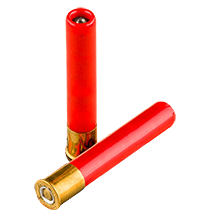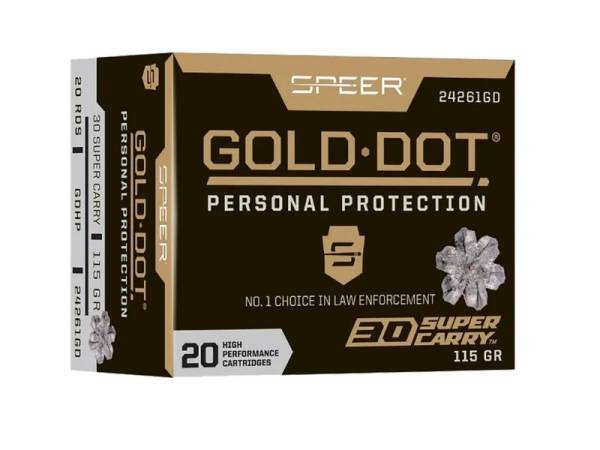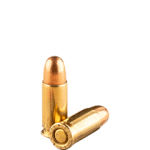Description
Intended for use as a self-defense and pest control cartridge upon its introduction in 1892, the .410 bore was well liked for its light recoil. And due to its use in revolvers such as the Taurus Judge, it has recently had a resurgence in popularity. First developed and used in England in the 1870s, the .410 bore remained a specialty cartridge and was not widely adopted for a long time. Some shooters felt it was novelty-only, but others found it to be great for hunting and competition shooting.
The .410 emerged in the U.S. around 1915, when the Harrington & Richardson company became the first to produce this shot shell for single-shot long guns. In 1933, Winchester introduced a three-inch shell for the .410, spurring other manufacturers of firearms and ammunition to get on board with this cartridge, ultimately growing its popularity. The Versatility of 410 Shotgun Shells
410 shells are the smallest commercially available shotgun shells on the market, but don’t let that put you off. They have a devoted following for good reason. They’re a preferred round for training, but also for hunting smaller game and varmints. Because they have roughly the same base dimensions as the .45 Colt, they can fit neatly into many single-shot firearms. What’s more, many derringers on the market are fitted for 45 Colt rounds and can fire 410 bore without any kind of modifications.
The History of .410 Shells
The roots of the 410 shell lie back in England in 1857. The Eley brothers were advertising centerfire and pinfire versions of the round for the first time that year. In 1874, the modern centerfire 410s first appeared in their catalog. However, it wasn’t until the turn of the century that the round got much traction on the market. The 410 was specifically recommended to naturalists and hikers who wanted the perfect round for their walking stick guns, which, yes, were a thing back then.
This is how the round gained a foothold in the market for smaller game and varmints. Naturalists and hikers loved the round, because it was perfect for quickly disposing of snakes, rats and any other disliked creatures a hiker might encounter. While not well known for this purpose, the 410 shotgun shell, when properly loaded with quarter-inch slugs, is also perfectly capable of disposing of coyote and even deer.
When it comes to defense, 410 bullets are by no means the equal of other shotgun rounds such as the 12-gauge, the traditional gauge used for home defense. However, companies such as Mossberg and Taurus have marketed shotguns chambered for the 410 as well as the aforementioned .45 Colt on the basis of the versatility of these weapons. What’s more, buckshot, slug and combined loads are readily available on the open market, making these combination weapons a great teaching tool that doesn’t skimp on home defense.
The Snake Charmer: The Iconic 410 Shotgun Shell Weapon
Of course, one can’t talk about the 410 shotgun shell without also discussing the Snake Charmer. This is a lightweight weapon designed by Homer Koon and produced by several companies between 1978 and 2009. The weapon was designed around the shell, trying to give the advantage of portability. Indeed, the weapon originally marketed as something that the owner could tote around on a hike or keep in their truck without it taking up too much space or weighing them down.
Koon sold his creation to Sporting Arms Mfg, of Littlefield, Texas, which added a safety and rebranded it as the Snake Charmer II. In 1988, they introduced the Night Charmer, which was effectively the same weapon, but mounted with a flashlight for use during the darker hours. The break-action gun was popular with outdoorsmen and sportsmen who didn’t necessarily hunt in keeping with the pedigree of this round.
The .410 Shell and Hybrid Weapons
Likewise, one can’t talk about the 410, nominally a shotgun shell, without also discussing the wide array of handguns manufactured for the purpose of using .410 bore – either on its own or in combination with other rounds. This also presents a curious loophole in shotgun law. If one uses shotgun ammunition in a handgun, it doesn’t matter in terms of the law. The handgun does not magically become a shotgun because a shotgun shell has been inserted into it. Thus, shotgun rounds can be fired from much shorter barrels than would be legally allowed with an actual shotgun.
The most common application is a weapon chambered for the .45 Colt round because the two rounds have such similar base diameters. Such weapons are generally not legal in California for either owners or dealers, but are 100-percent legal in the other 49 states. American Derringer and Bond Arms each sell derringer-style weapons chambered for such combination use. The Taurus Judge is perhaps the most famous of these hybrid firearms.
Many shooters consider the .410 a good choice for introducing new and young shooters to shotgun sports. .410 shotguns are lighter than guns for other common gauges, and the recoil is more gentle – two factors that are believed to help new shooters acclimate to exertion and impacts of shooting. There are counter arguments, however, when it comes to 410 vs. 12 gauge and 20 gauge ammo, making the case that a shooter cannot learn to deal with the increased recoil of the latter two larger cartridges. The .410 also puts less shot in the air, which makes it harder to hit a moving target than with a larger shotgun. Some experienced competition shooters like to use the .410 since it makes breaking clays a greater challenge due to the reduced shot payload, making 20 and 12 gauge vs. 410 an interesting comparison.
The .410 Shotgun Shell and Personal Defense
Today, .410 rounds are finding new applications for personal defense. While it was not initially considered a cartridge suitable for self defense – especially as a concealed carry weapon – the introduction of the Taurus Judge and the S&W Governor revolvers legitimized the .410 as a real player in the category of personal protection.
These new revolvers have inspired ammunition manufacturers to develop some new choices for the .410. It was unheard of to find #000 Buck in .410 bore before these revolvers arrived on the scene, but now at least five major manufacturers sell cartridges with this large shot in their special-purpose ammo. .410 slug cartridges are also easier to find these days, as are specialty cartridges that fire discs instead of buckshot.
While these weapons are better than nothing for home defense, they are certainly not the most ideal. When you get right down to it, the shell is birdshot. The single shot and derringer options are curious and, of course, the round has a proud heritage as snake shot. But you wouldn’t want to make this round your primary go-to for home defense or any other kind of self defense. A tertiary weapon, maybe, but certainly not the primary or secondary line of defense.
The .410 bore has proven to be a useful tool for hunters and competitors, as well as for people seeking an alternative ammunition for personal defense. Due to the recent growth in popularity, manufacturers will meet the increased demand for .410 ammunition and offer ongoing improvements and refinement to keep the smallest of the shotguns alive and well.
While many well-equipped homes have a 410-equipped firearm somewhere in the home, it’s not going to be the first weapon you purchase. Still, if you’re looking for something fun, especially for teaching children, women, smaller men or the disabled, this can be a fun way to introduce someone to the joy of shooting.
FAQ
What is a 410 shotgun shell?
The .410 shotgun shell, also referred to as .410 bore, is the smallest shotgun shell in commercial ammo production. The same base dimensions as the .45 Colt, the .410 is used for clay pigeon target shooting and hunting small game and varmints. Due to its small size and limited recoil, the .410 is often recommended as a first shotgun for youth hunters, as well as those with small frames, women, or seniors.
How many pellets are in a .410 shotgun shell?
The number of pellets in a .410 shotgun shell depends on the size of the shot. The most popular .410 shells are shot sizes #7.5, #8, and #9. There are approximately 225 pellets in a 2 ½ inch #9, popular for skeet shooting, while the #7.5 features about 175 pellets.
How do you reload .410 brass shotgun shells?
The .410 shotgun shells are reloadable and many fans of the round hand load due to the price and limited availability of the shells. Shotgun shells are a little more complicated to reload than pistol and rifle cartridges, but it is doable, although a shotgun reloading press is necessary.
What is the effective range of .410 shotgun shells?
Although there are a lot of factors that influence the range of the .410 shotgun shell, most agree that the effective range is about 25 yards for small birds and varmint. With three inch shells and an experienced shooter, the maximum range may stretch to 35 yards.
What is better 3″ or 2 1/2″ 410 shotgun shells?
While the three inch .410 shotgun shell may have more pellets, the two and one-half inch shell is often more effective. The shorter shell holds its pattern better, as the three inch has an increased risk of bore scrub, which leads to shot deformation and fliers.
What type of handgun uses 410 shotgun shells?
There are handguns chambered for the .410 bore cartridge. Most notably, the Taurus Judge, Smith & Wesson Governor, and Magnum Research’s Big Frame Revolver (BFR). While the first two are designed for personal defense, the BFR was designed as a hunting handgun.
What uses does the .410 shotgun shell have?
The .410 shotgun shell has a variety of uses. It’s a top choice for introducing youth hunters to shotguns, as well as women, seniors, and those with small frames that may not be able to handle the recoil of larger shotguns shells, such as the 12 gauge or 20 gauge. It can be used to harvest small game birds and shoot varmint. The .410 is also popular among clay pigeon shooters, especially for skeet, and is seeing an increase as both a home and self defense cartridge.





